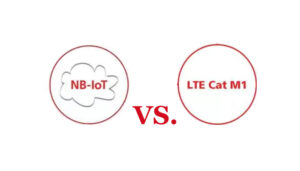After the read, you will learn about why 5G is good for enterprise IoT development.
The Internet of Things is everywhere and is evolving like the World Wide Web. With the New 5G, enterprises must leverage infrastructure, automate as many processes as possible, and focus on innovation, and organizations, large and small, should explore the possibilities in this space without thinking twice.
There is an interesting analogy to understand the Internet of Things: these devices are neurons connected to the giant brain known as the Internet. Each small device in this network holds an important set of data. Now, the performance of this kind of neural network will depend directly on the efficiency of data transmission.
This is exactly what 5G New Radio offers, a fast and sustainable network. Yash Mehta, an expert in IoT and big data science, says that 5G NR is coming with a significant improvement over the bandwidth of the previous generation and that a third of the world’s population will consume 5GNR bandwidth, thus becoming some extent a contributing node to certain IoT networks.
Why is 5G so important to the enterprise IoT?
Faster signals for the enterprise IoT
To be honest, 5G and enterprise IoT are complimentary. While all elements of an IoT network require powerful signals, 5G provides the necessary infrastructure through a technology called beamforming. It captures signals from multiple antennas and directs them to a specific device.
Beamforming is effective because it works across physical barriers, such as walls, thus ensuring the uninterrupted transmission of signals. Previously, network signals were bound to lose strength.
This centralized delivery of high-quality signaling to drive the IoT ecosystem makes beamforming one of the most impactful 5G capabilities.
Second, the ability to receive and transmit data is another improvement over 4G. Previously, it was quite successful in some use cases. With 5G, enhanced MIMO (multiple input multiple outputs) capabilities are available to all. Mimo supports antennas regardless of geography thanks to its powerful bandwidth. This allows poor areas to access supporting applications such as 5G and IoT.
More Stable Connectivity for the enterprise IoT
For the IoT, network stability is more important than speed. Uncertain downtime of any kind not only disrupts the functioning of the ecosystem, but it also keeps the risks confidential. Even in the simplest of home IoT use cases, such as automatic locks, CCTV, appliances, etc.
Network uptime is key. 5G networks simply ensure the same. They can handle more devices, provide 10x the speed, and create a reliable ecosystem for device communication.
As a result, the next generation of IoT devices will benefit from low latency and high-speed connectivity, which could drive more complex operations. Take the manufacturing unit, for example. It has a range of devices that connect remote monitoring, predictive analytics devices, and automated assembly lines. Manufacturers can revolutionize their production goals by embracing the 5g-enabled Industrial Internet of Things (IIoT) space and accelerating their time-to-market plans.
Enterprise IoT remote Inspection
Among the many enterprise IoT applications, a remote inspection of equipment and processes is the most popular. For example, industries such as power and energy have equipment located in different places. Transformers, power grids, poles, etc. should be continuously monitored to avoid any kind of interruptions.
With IoT smart infrastructure, technicians can check maintenance remotely, thus reducing field visits to sites miles away. Similarly, railroads can use IoT sensors to detect track failures and issue timely alerts. Or, they can predict late trains and broadcast them to all relevant stations on the route.
In the case of IBM’s civil infrastructure, the sustainability of aging bridges, tunnels, road networks, etc. will be assessed using unmanned aircraft systems. Data obtained from multiple devices are used to analyze and identify critical failure areas.
Similarly, drones can perform aerial monitoring of other city assets, such as natural gas pipelines, utility lines, traffic lights, etc. If executed properly, such inspections can identify problem areas and avoid large-scale disruptions.
The Internet of Things is everywhere and evolving like the World Wide Web. With 5G, organizations must leverage the infrastructure, automate as many processes as possible, and focus on innovation, and organizations, large and small, should explore the possibilities in this area without thinking twice.
Besides Why 5G is Good for Enterprise IoT article, you may also be interested in the below articles.
PCB Antenna VS. External Antenna
Ceramic Antenna VS. PCB Antenna, A Comparison Guide
Wifi vs. 5G, is 5G better than Wifi?
Mobile Networks’ Evolution From 1G To 5G




